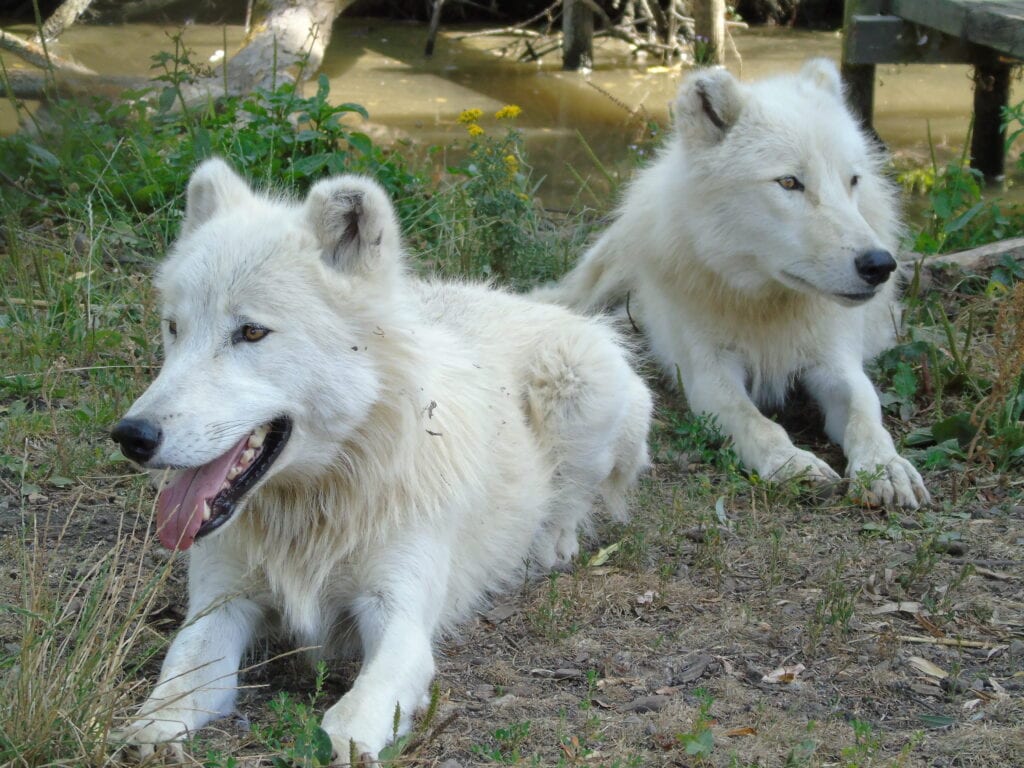Wolves are a formidable predator. With 42 teeth, 4 of which are canines which they use to grip onto their prey and they are able to bite through bone allowing them to get every last crumb of meat, including marrow; an extremely nutritional prize! They have thick fur to keep them warm, especially Artic wolves, which can survive temperatures of -30 degrees Celsius. They can run up to 45mph for around 20 minutes. When looking for prey they will maintain a speed of about 5mph which they can hold a lot longer. They may travel 30 miles a day in search of food.

Pack mentality
Their most important and impressive trait is their ability to work as a pack. These range on average between 6-7 individuals but they can have mega packs of 30 individuals, depending on the species. The pack is vital to survive and so bonds are strong between pack members. All members help to rear and protect the pups, hunt for food and defend territory. Howling is used to mark this territory as well as locate each other maybe if some have gone off to hunt, for example. It is therefore an important part of pack bonding along with eating a meal together. Here at the park you will see we give large feeds, such as half a carcass to encourage this natural behaviour. The group howling they instigate themselves.

Socialisation
It is likely that this natural ability to socialise that made it so easy for them to get along with our ancestors some 15 to 30 thousand years ago and it is this that lead to the domestication of the dog. Your dog’s ancestors, which were wolves thousands of years ago, realised that hanging around with some of our ancestors would result in food. So it benefitted them to socialise with animals outside their species, humans.
Dogs and jobs
So over a very long time, wolves became dogs and a vast array of dogs in fact! Divided in breeds of such diversity. They may range in size from Yorkshire terriers to Great Danes, whippets to St Bernards. While today we may have a breed simply because we enjoy them, over time they developed with a specific sense of purpose or job.
Danger, danger!
Jobs will have started simple, alert animals may have been used as lookouts to warn of danger. Strong, aggressive animals were likely used for defence. Others will have been picked out as they are good at finding/catching prey. From here they began to specialise even more. Some jobs you wouldn’t have expected.
Retrieval
The poodle was originally used to retrieve waterfowl like ducks. Anyone who has held one over the bath ready to submerge them will likely have seen it instantly start doggie paddling. Their name comes from the German for ‘splash dog’, pudelhund.
Helping humans
Akitas were bred as hunting dogs and in packs they would take on large game like boar and even bears. The Alaskan malamute would pull sledges as part of a team allowing people to travel vast distances.
Burmese mountain dogs have been used as drafting dogs able to pull carts as well as herd cattle and protect them from predation. Many sheepdogs/shepherds are used on farms for looking after and rounding up flocks, maybe sheep being bought in for shearing.
Newfoundlands have partially webbed feet which comes in useful for swimming. They were often used on boats to rescue those who have gone overboard as well as helping to bring in the fishing nets and cart it to where it was to be sold. A very useful breed to a fishman.
Cane corso was bred to charge directly at enemy lines in the Roman times.
So generally speaking, main purposes for dogs today are for protection; be it their family or livestock. War dogs were, as their title suggests, designed for attack. Working in the way of sled dogs or retrievers perhaps. Either way, they have been bred for their usefulness to us. While jobs may not necessarily be there for them our own adoration for our canine friend has ensured they remain in the forefront of our thoughts. While here at the park, our wolves are not domesticated, we still see many similarities along with differences. You never know, the next time you come you may even catch Ghost performing a characteristic play bow. I think we all know what that means.


